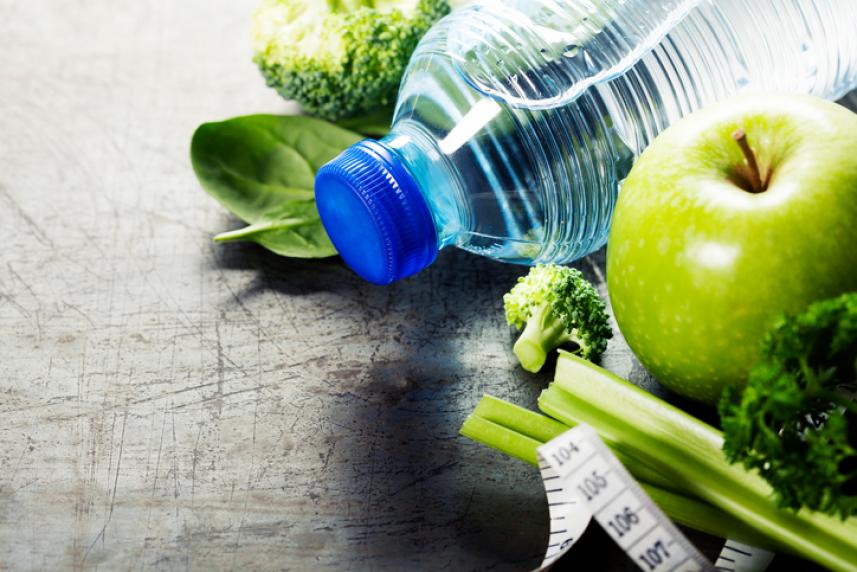The best and worst foods for diabetes
If you think a diabetes diagnosis will limit your food choices, think again. A few simple strategies can help keep you healthy and feeling your best.

Confused about what’s smart to enjoy (and avoid) after a diabetes diagnosis? “The good news is that you’ll still be able to enjoy a wide assortment of foods,” says Katy Hawkins, R.D., L.D.N., a certified diabetes educator based in Pittsburgh.
Follow these strategies to plan healthy, delicious meals:
Strategy #1: Divvy up carbs throughout the day
Our bodies use carbohydrates for energy in the form of glucose. Carbs may also provide nutrients, such as fiber, vitamins, and minerals. But if you eat more carbs than your body can use, the glucose remains and your blood sugar level rises. “Frequently people with diabetes question me about skipping carbs at one meal so they can double their carbs at the next meal,” says Hawkins. “But balance across the day is important.”
Many people with type 2 diabetes do well with 45 to 60 grams of carbs at each meal and one to two smaller snacks. Work with a dietitian who can consider your activity level and medications. Carbs that contain fiber and protein don’t affect blood sugar as dramatically.
Good choices
- Fiber-rich and colorful fruits and vegetables. Examples: apples, berries, beans, legumes, squash, and sweet potatoes
- Protein-packed dairy. Examples: Greek yogurt and low-fat or fat-free milk
- Whole grains. Examples: whole-grain pasta, high-fiber cereal (with 3 grams of fiber or more), oatmeal, bulgur wheat, and whole-grain bread
Watch out
Sugar is a carb, but it doesn’t supply the nutrients that other carbs do. Keep in mind that it’s also a simple carb, so any effect on your blood sugar level can be quick. And don’t fall into the “sugar-free” trap — those items may still contain carbs that need to be considered, says Hawkins.
Strategy #2: Enjoy free foods
Non-starchy vegetables are sometimes called “free foods” because they don’t affect your blood sugar. “These veggies are great for all of us, as they are rich in vitamins and minerals but low in fat, cholesterol, and carbohydrates,” says Hawkins.
Good choices
- Cruciferous/brassica. Examples: brussels sprouts, broccoli, cabbage
- Gourds. Examples: cucumber, zucchini, squash
- Some legumes. Examples: green beans, peas, alfalfa
Watch out
Cooking certain vegetables may cause nutrients, such as vitamin C, to be lost. To reap the most health benefits, try to eat cruciferous vegetables raw, and cook carrots, and squash lightly.
Strategy #3: Power up with lean protein
Making good protein choices can help you eat well with diabetes, too. “Protein helps to keep you feeling full while slowing down the digestion of carbs,” says Hawkins.
Good choices
- Seafood. Examples: salmon, tuna, sardines, mackerel, and herring
- Poultry. Examples: chicken and turkey breast
- Lean beef. Examples: tenderloin, chuck and rump roast, 90 percent lean ground beef, and round, sirloin, T-bone, porterhouse, and flank steak
- Lean pork. Examples: Canadian bacon, tenderloin, loin roast, and pork chops
- Dairy and eggs. Examples: eggs, egg products, and low-fat cottage cheese
- Soy. Examples: soy milk, edamame, soy nuts, tofu, and tempeh
- Nut butter. Examples: peanut butter, almond butter
- Beans and legumes. Examples: black beans, lentils, chickpeas
Watch out
Many protein sources can be high in fat. Also, be mindful of adding fat when you’re cooking, warns Hawkins. Choose broiling, baking, and grilling over frying.
Strategy #4: Add in healthy fats
Fats may not be a factor in managing blood sugar specifically. But watching your overall fat intake will help your heart health (important if you have diabetes) and help you manage your weight, which can benefit balancing blood sugar. Use good monounsaturated, polyunsaturated, and omega-3 fats in moderation.
Good choices
- Nuts and seeds. Examples: almonds, cashews, pecans, chia seeds, flaxseeds, walnuts
- Avocados
- Olives and olive oil
- Canola oil
Watch out
- Animal fats (saturated fats). Examples: regular ground beef, hot dogs, sausage, poultry skin, full-fat cheese and dairy, butter
- Trans fats. Examples: some margarines, shortening, some fast-food items (such as french fries), and processed foods (such as crackers, chips, cookies, and cakes made with hydrogenated oil or partially hydrogenated oil)
- Coconut and palm oils
When eating with diabetes, know this: There’s no one-size-fits-all diet. Work with your health care team to figure out an eating plan that will work for you, your culture and values, and your life.



